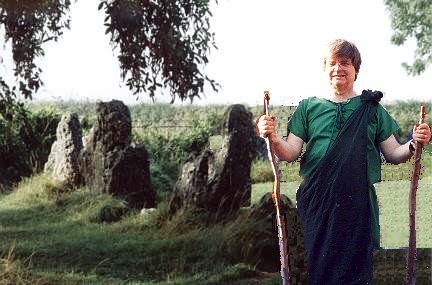

Fifty years of treading the Track, and feeling its power
Click
here to accompany me through the years
| The book Seekers of the Linear Vision by Paul Screeton, former editor of The Ley Hunter, is available from the author at £5.95 including postage, from 5, Egton Drive, Seaton Carew, Hartlepool, Cleveland, TS25 2AT. |
On 30th June 1921, Alfred Watkins, a Herefordshire businessman, magistrate and photographer had finished his work for the day, and, as the weather was fine, looked at his map for somewhere interesting to explore. He suddenly noticed that several ancient sites fell in a straight line that passed over prominent hilltops. An idea of a system of aligned tracks in prehistory came to him that he was & to spend the rest of his life researching in the thorough, precise way that was his nature. He formed an organisation, the Straight Track Club, that was formed of others who had been enthused with the idea, and much work was done consolidating the knowledge of the alignment system, which seemed very wide-ranging. He called the alignments "leys", and this name has remained, although more recently many people call them "ley lines". In 1961, due largely to the work of Tony Wedd of Chiddingstone, it was discovered that there seem to be subtle and unknown but often seemingly powerful energies at the sites which make up the ley system. These are often detected by dowsers and the leys which join them can be detected using this method too. I was involved from the beginning with the 1960s ley revival, and produced the first series of The Ley Hunter for the then editors, first Philip Heselton and then Ken Rogers. Since then, my life has flowed with the energy currents, and it has been an exciting trip.
Jimmy Goddard (email link)
Michael
Behrend Archive - An archive of downloadable republications
of earth mysteries literature, including Watkins works and pre-Watkins works
studying alignments and landscape geometry
Ley
Lines, Geopathic Stress, Standing Stones, Cup-marked Stones or Rock Art
- David Cowan's many years of research in Scotland